Animal sacrifices and astral tombs: The mysteries still emerging from the Saudi deserts
What happens when several hundred archaeologists gather in a “glass box” in the desert?
It’s an odd kind of question, but this actually occurred last week when experts from all over the planet converged in the shimmering mirror-covered Maraya cultural center near the ancient oasis town of AlUla in Saudi Arabia, for the inaugural World Archaeological Summit.
The result was an event that gave fresh perspectives on some of the ancient mysteries that are being unearthed in Saudi as it invests billions of dollars in opening up its long-hidden past to global tourism.
Created by the Kingdom’s Crown Prince Mohammed bin Salman, known as MBS, and sponsored by his Royal Commission of AlUla, the conference opted for discussion panels, not academic papers, and invited a diverse range of archaeological experts.
The aim, in part, was to help map Saudi Arabia’s path to sustainable heritage tourism.
Most attendees were cautious about what to expect in a country where the event sponsor has a reputation for both shocking brutality and high-speed reform. They certainly weren’t bored. “We didn’t expect so much conversation and I don’t think the organizers did either,” one attendee told me.
Ancient discoveries
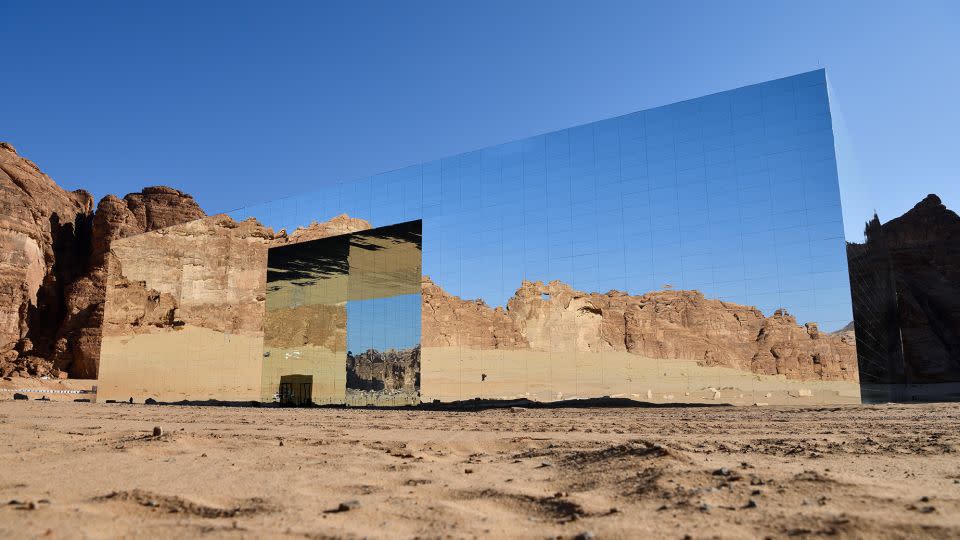
An offbeat conference was only part of the pull. The experts were given rare access to a trove of ancient discoveries that, until the past few years, have been off the beaten archaeological trail for all but a handful of hardy enthusiasts.
Archaeology is both a passion for MBS and a gateway to his vision of diversifying the Saudi economy by bringing in tourists to enjoy heritage sites alongside luxury resorts.
For him, it’s also a useful vehicle to marginalize Saudi minority conservative Islamists’ contempt for the sites, which they consider to be un-Islamic.
By reversing decades of cultural isolation, developing the AlUla oasis and opening up vast millennia-old Nabatean grave complexes in nearby Hegra – as well as exploring myriad other sites – Saudi Arabia is seeing fascinating ancient discoveries being made.
Yet for each mystery unraveled, another conundrum or 10 pops up – like the astral alignment of massive Nabatean graves carved into the stunning sandstone cliffs.
Royal Commission for AlUla archaeologist Adam Ford took me out to see the graves up close.
“They (graves) appear to be aligned with the rising and setting of the sun and moon,” he says, “at times of solstice, perhaps to tell the seasons.”
Ford, who mixes the weathered looks of a field archaeologist with the manner of a friendly teacher, brings the past to life as we explore.
“Up to 10 ancient languages from North Africa were discovered here,” he says.
World’s oldest animal sacrifices?
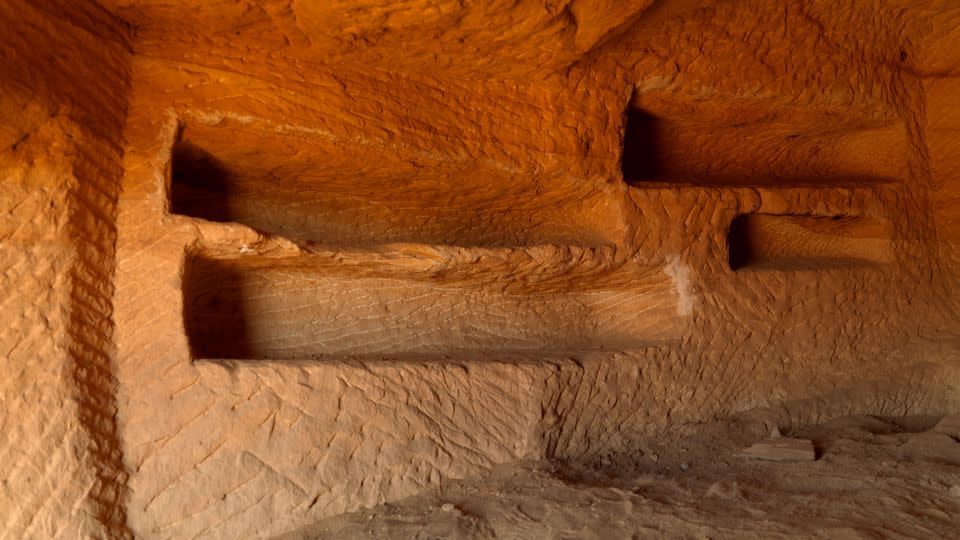
Archaeological finds so far show humans trod this land at least 200,000 years ago. They came after leaving Africa by way of the Sinai, Ford says. “They turned right, headed south” into the Arabian Peninsula, today’s Saudi Arabia.
Each discovery, he says, brings potential for new understanding. A recently recovered ancient silk fragment, he says, shows trading routes stretched southward all the way to “India or the Far East.”
“We are still running tests on the fragment,” he adds.
Thanks to new, unprecedented access to AlUla’s ancient wonders, they’re also still trying to unravel the mystery of the Nabatean grave orientation and how they might connect to stargazing or other planetary events.
“We just had a researcher come in from the Canary Islands,” says Ford. “It was only a few months ago, the data (on the stars) is pretty raw, he is still working his way through it.”
One recent discovery is what’s thought to be one of the world’s oldest animal sacrifice sites. Although it’s evident numerous beasts died there, it’s still the source of much mystery, according to Jonathan Wilson, the RCU’s collection and knowledge manager.
At the RCU’s new HQ, the refurbished AlUla Museum, Wilson slides open one of the massive drawers in the packed artifact storage room and carefully lifts out a clear plastic bag containing what looks like a huge yellowing horn.
“Aurochs,” he says. “A now extinct forerunner to today’s domesticated cattle, but bigger.”
Carbon dating of cooking charcoal found nearby accurately dates the site to 5,200 B.C.E., Wilson says, but the mystery is why only the upper part of the beast’s skull and the horns were found.
“They discarded the rest.”
It’s hard to imagine cattle could survive, let alone thrive in the furnace-like desert of today’s Saudi Arabia. According to Ford, “the landscape was greener back then.” There was more rain, it seems. But why? That too is a mystery.
‘Amazing’ archaeology
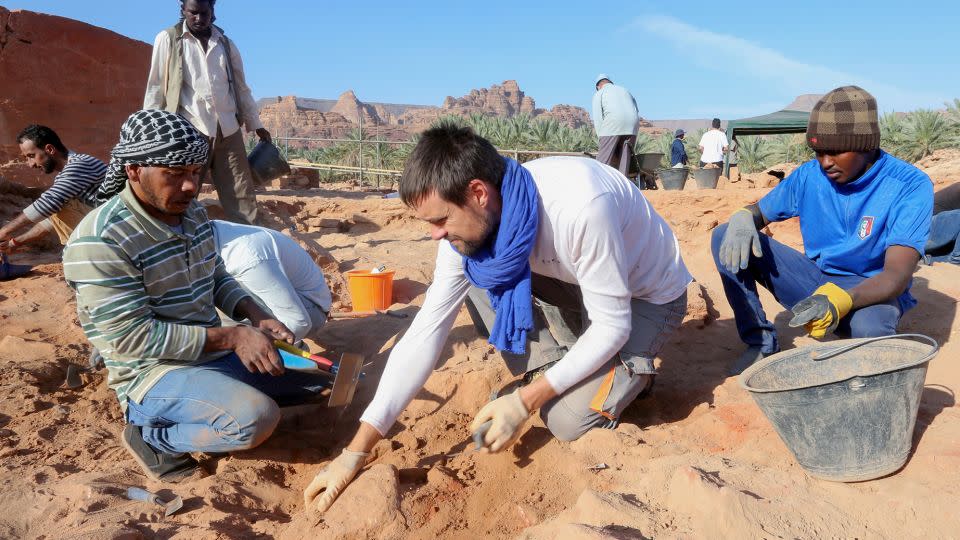
The RCU says its mission is to help Saudi Arabia’s archaeologists solve such conundrums regularly thrown up by the desert, while sustainably scaling up their operations and expertise.
Wilson turns to another drawer and pulls out a broken six-inch, dark ochre-colored figurine, perhaps used as some kind of offering.
“They were taken to a mountain and once they were smashed they were left there, people never went back,” he says.
He’s referring to the Dadenites, the people who ran the incense and spice trade routes through AlUla before the Nabateans, through events that are another mystery, grabbed power from them.
As RCU operations grow Wilson hopes its experts will learn more, including why the figurines were smashed.
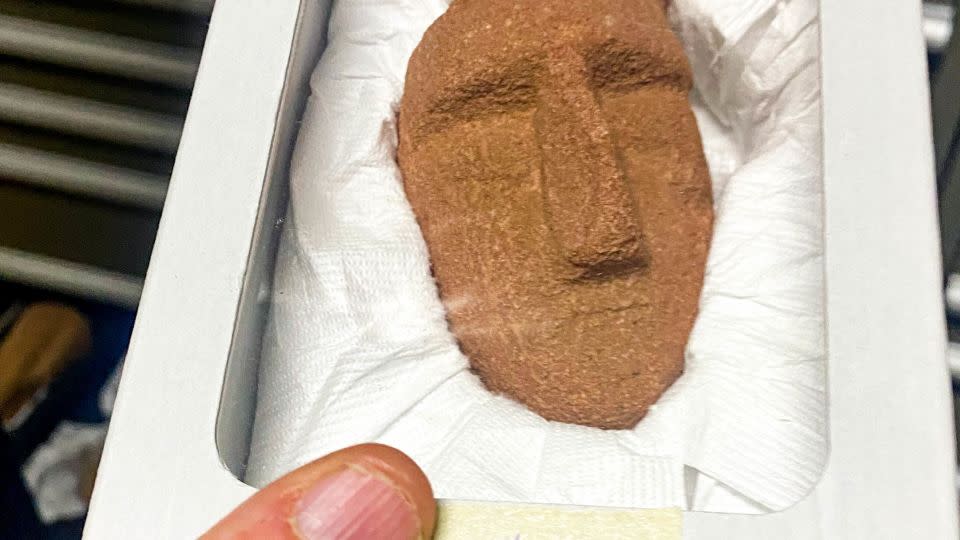
Each season, Wilson says he gets about 700 cases of artifacts from archeological digs run by the RCU.
“Each crate can have one to 600 items,” he says. “We sort them according to importance,” with the aim of displaying many of these unearthed treasures.
Coins, he says, offer some of the biggest clues about the civilizations who once called AlUla home. The Nabateans put kings’ heads on theirs – super helpful for tracking dynastic periods.
The Dadenites didn’t. They were, according to Wilson, forging Greek coins “because they were more valuable than their own.”
Ford, whose decades of archaeological experience span many continents, says the area around AlUla and Hegra is mind-blowing.
“Some of the most amazing archaeology in the world,” he says.
Connected civilizations
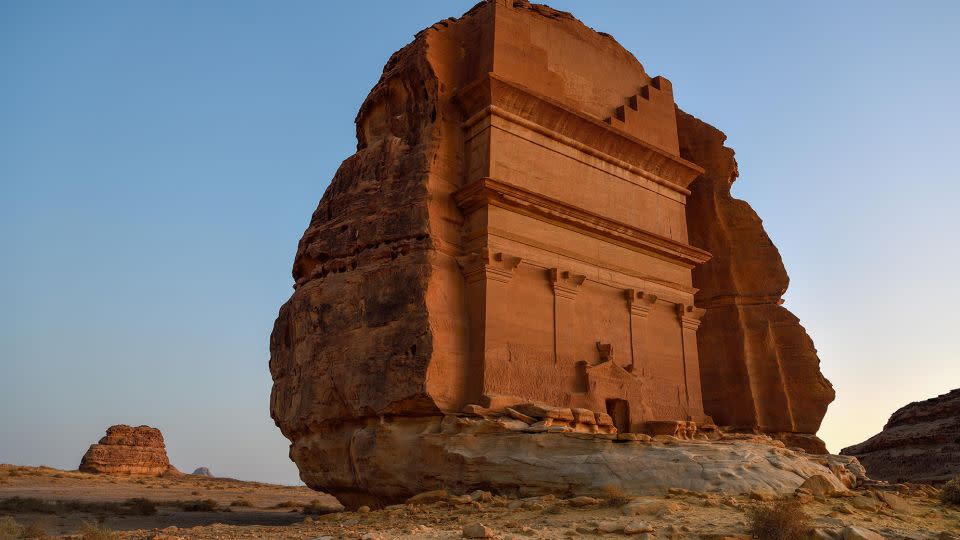
Old assumptions, Ford says, are being ripped apart.
“In the past, we thought civilizations were less refined, less joined up.” Yet what is being discovered in AlUla, he says, suggests that “the ancient world was much more connected than we think.”
Oddly, interconnectivity was the almost universal takeaway from the archaeological summit, with attendees apparently relishing the opportunity to talk outside their own disciplines while discovering common and sometimes competing passions about their profession.
I was at the summit to help moderate a couple of the many discussion panels. Conversations got feisty at times. Gaining attention were controversial topics about the role archaeology plays in identity and the responsibility governments and archaeologists have to openly reflect and not distort discoveries.
The importance of saving ancient artifacts from destruction or just daily wear and tear also fired up discussions. Best practices were identified that balanced government needs with listening to local communities and working with them to be custodians in a way that fits their values.
It was clear from the conversations over the two-day event there was no silver bullet, no one size fits all.
But if lessons from the summit inside Maraya’s mirrored walls are heeded, then Saudi Arabia’s archaeological coming of age will get a boost.
For more CNN news and newsletters create an account at CNN.com
